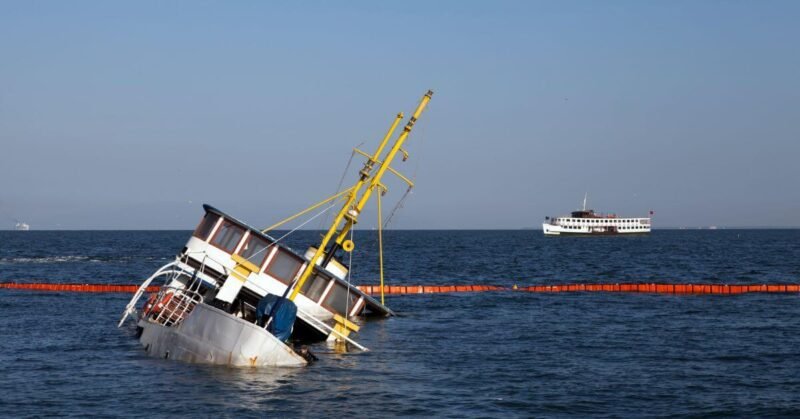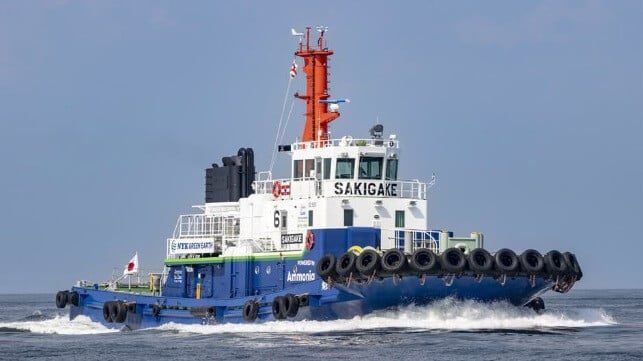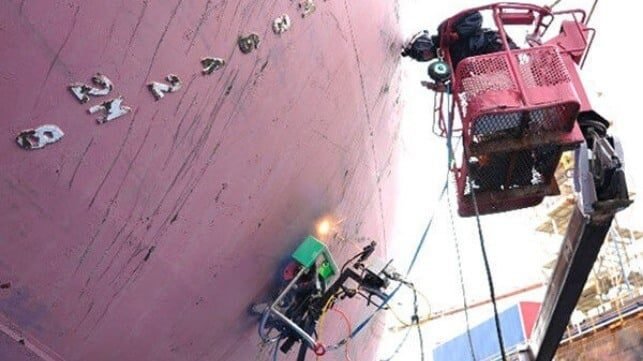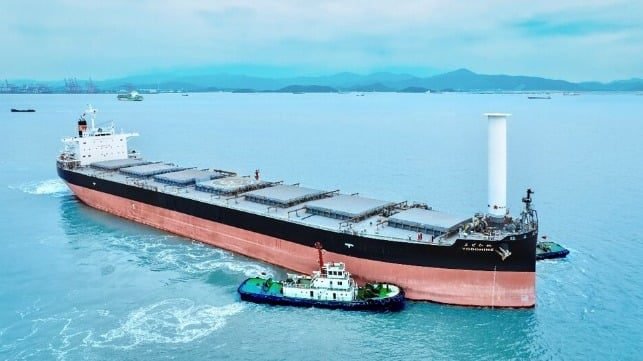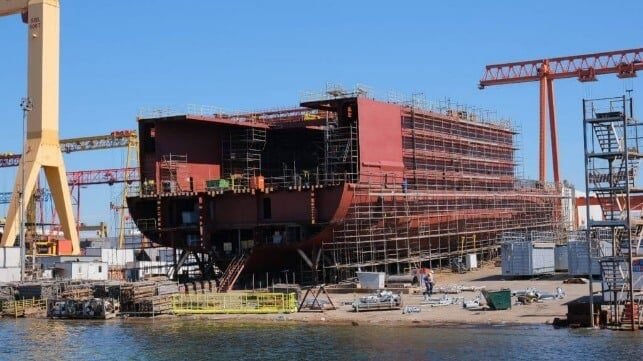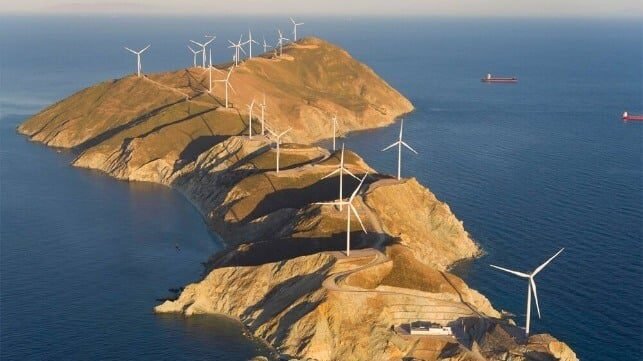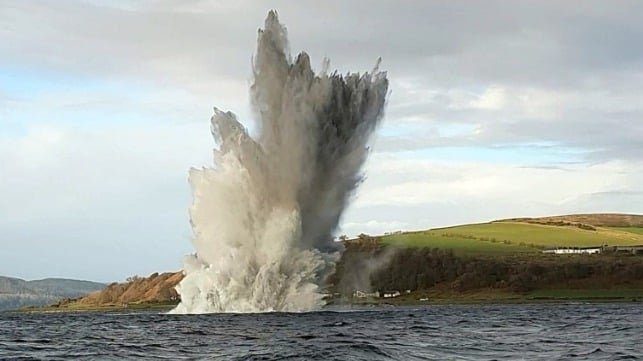A unique collaboration between a ship designed to transport spent nuclear fuel for the UK government and a new wind-assisted propulsion technology is underway. The Pacific Grebe, a 4,900 dwt ship, arrived in Southampton, UK, with the first-of-its-kind FastRig installed by Smart Green Shipping. Built in 2010, the ship is specifically designed to transport nuclear material, with four shielded holds capable of carrying up to 20 flasks of nuclear waste. Operating for Nuclear Transport Solutions, the ship travels over 10,000 miles without stopping at speeds up to 14 knots.
The Pacific Grebe has left its home port of Barrow-in-Furness to undergo sea trials after receiving a 20-meter FastRig, a retractable rigid wing sail made from recyclable materials. Smart Green Shipping and the University of Southampton are collaborating on testing, with the FastRig expected to reduce fuel consumption by up to 30 percent. The autonomous system is easy to operate and requires minimal deck space, with the ability to retract for port operations. The system underwent initial tests during the voyage to Southampton.
The FastRig wingsail, a lightweight solution utilizing sensors and automated technology to adapt to changing weather conditions, aims to enhance fuel efficiency and safety. NTS’s Managing Director of Shipping, Pete Buchan, believes this trial could revolutionize the industry by significantly reducing emissions and fuel usage. The trial reflects a growing trend in the shipping industry towards wind-assisted propulsion for sustainable operations. Smart Green Shipping has received additional funding from Drax and the UK’s Clean Maritime competition to further develop this technology.







